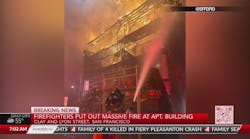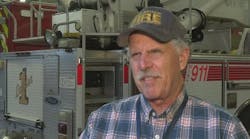Even at small neighborhood bars like Estelle's Cafe and Lounge, where lines were unheard of before the deadly stampede at the E2 nightclub across town, doormen use hand-held clickers to keep track of patrons and find themselves telling people they'll have to wait - the bar's already at capacity.
``I would definitely say there was more freedom with the occupancy before E2,'' doorman Al Myers said Saturday. ``Now, I have to have two clickers to keep track of who is coming in and who's leaving. Before, I could just wing it.''
Crowding is exactly what the city has been trying to avoid since the E2 tragedy in the early hours of Feb. 17, 2003. A security guard trying to break up a fight released pepper spray, sparking a panic that sent hundreds of club-goers surging toward the already crowded stairwell leading to the street.
In addition to the people killed, 57 others were injured, some trampled as the crowd pushed toward the exit. Some 300 relatives and friends of the victims held a memorial outside the still-closed South Side club early Tuesday and read aloud the names of the dead on the one-year anniversary.
In the year since, fire inspectors have dropped in on the city's clubs for more than 2,000 unannounced inspections; new rules require all exits to be clearly marked; even 911 centers are better prepared to head off another disaster.
``We've seen less violations,'' said First Deputy Fire Commissioner Charles Burns Jr., who added that the inspections would continue indefinitely. ``We see public building owners and managers getting the message.''
Today, city procedures have changed to tighten control over nightclub crowding, and club-goers across the city say they are paying more attention to their surroundings.
``I think about (E2) every night,'' 22-year-old Lupe Lopez said Friday while unwinding at the Funky Buddha Lounge. ``When I go to a new place, I look for exits.''
At least 16 clubs have been temporarily shut down because of overcrowding - about one a month over the past year and four in January alone - though the clubs were allowed to reopen the following night.
``These people have to be given the benefit of the doubt'' that inspectors may have arrived when it was unusually crowded, explained fire department spokeswoman Molly Sullivan.
After the city shut down the Funky Buddha Lounge for a night in May, the doormen started using clickers to more accurately track the number of people coming in and out, said the club's manager, Stephanie Christian.
``It's actually been easy to comply,'' she said.
The city also approved a package of reforms last fall, including requiring every club to visibly post information on safety exits and evacuation routes. The city also banned the indoor use of pepper spray.
A new computer system now allows police officers to call up information on the spot from the building department about court orders involving a specific address.
The city's 911 center also has been updated. There were about two dozen phone calls from E2 the night of the stampede, but many callers didn't know the name of the club or its address, so each 911 operator had to start over with the search. Now, as soon as five calls come in from one location, the information appears on a large screen in the center so everyone there is aware.
Building Commissioner Norma Reyes said her department had inspected 300 taverns, nightclubs and restaurants since the tragedy to ensure the buildings were up to code and had adequate exits. She said the department has 90 to 95 percent compliance in correcting the violations it finds.
``The bottom line is the changes have made Chicago's large gathering places safer than they've ever been,'' City Corporation Counsel Mara Georges said.
Related:
- 4 Plead Innocent in Chicago Nightclub Deaths
- Somber Service Remembers Chicago Nightclub Victims
- Fire Department Closes West Loop Nightclub For Violations
- Chicago Churches Ring Bells In Honor Of E2 Nightclub Victims
- Second Chicago Nightclub Closed Over Safety Concerns
- Memorial Service Held For Chicago Club Victims
- Police Identify Chicago Nightclub Security Guard
- Nightclub Disasters Prompt Inspections
- Charges Loom in Chicago Nightclub Deaths
- Chicago Club Stampede Kills 21





